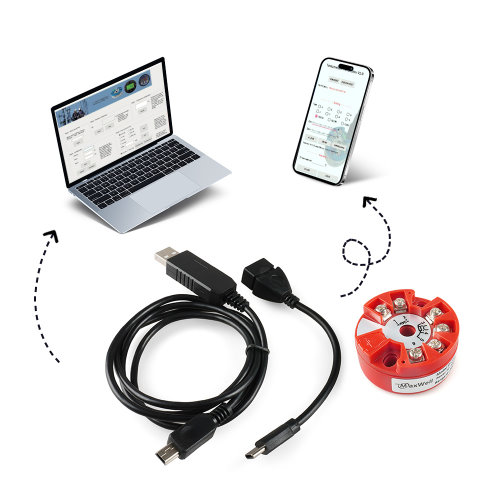-
Tel : +86-592-6382791
-
Email : sales@pidmaxwell.com
Tel : +86-592-6382791
Email : sales@pidmaxwell.com
Below are some of key factor you shall consider while choosing a correct transmitter for your application
1)The input of the transmitter, if you are end user and looking for a cost down version solution, you might want go with the transmitter with a fixed input such as type K thermocouple or PT100, in this case, we as factory can preset the input and range of you, the transmitter will be installed right way after you get it from us, no extra programming is needed, saves time and efforts for you. If you are stockiest looking to build up some stocks in your disposal, then our universal input transmitter is an ideal choose. Transmitter compatible with both TC and RTd input, and programmable via PC and android device.
2)Output is another key factor to consider, in many cases, 4-20mA output will be the choice for output, but some of customer will need 0-10VDC output too, we can offer both, our TT-210 is 4-20mA output version, and TT-500 is 0-10Vdc output version
3)Some of customer also looking for digital output version such as HART, PROFIBUS PA, Foundation Fieldbus
4)The accuracy is also crucial in selecting suitable transmitter for your application, the accuracy of our transmitter is 0.2% for RTD input and 0.5% for thermocouple input, please take this into consideration in the process of selecting temperature transmitters
5)For some of application, they tend to more demanding on temperature stability/drift of the transmitter
6)Environmental & Hardware Considerations:
a.Ingress Protection (IP) Rating: Crucial for withstanding dust, moisture, and washdowns (e.g., IP66, IP67).
b.Ambient Temperature Range: Ensure the transmitter can handle the environment it's installed in.
c.Hazardous Area Certifications: A major topic. Cover approvals for Intrinsic Safety (IS), Explosion-Proof (Ex d), and Non-Incendive (NI) for use in hazardous locations (e.g., ATEX, IECEx, UL/cUL).
7)Some of other features to look into such as display, configuration method etc
a.LCD Displays: For local reading of temperature and diagnostics.
b.Diagnostics: Sensor burnout detection, loop fault indication, out-of-range alerts.
c.Easy Configuration: Via buttons, handheld configurators, or software or PC and cell phone
